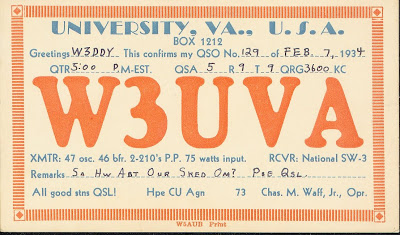Arduino The Documentary (2010) English HD from gnd on Vimeo.
Embedded controllers may seem a bit far afield for SolderSmoke. After all, I kind of gave up on surface mount, and have pretty much resigned myself to "hardware defined radios." (Someone sent me a picture of a T-shirt that kind of captured the sentiment: "I PROGRAM IN SOLDER!") But still, for a number of reasons I find Arduino intriguing. Aside from the amazing things you can do with this device, I like the homebrew, hands-on aspect of it. As you will see in the documentary, there is a real spirit of international collaboration in Arduinoland -- Italians, Spaniards, Colombians, Americans all working together on the project (the documentary itself is also available in Spanish). I also like it because it has its roots in Italy. So, even if you are not into embedded controllers, check out the documentary. I think you will like it.









































